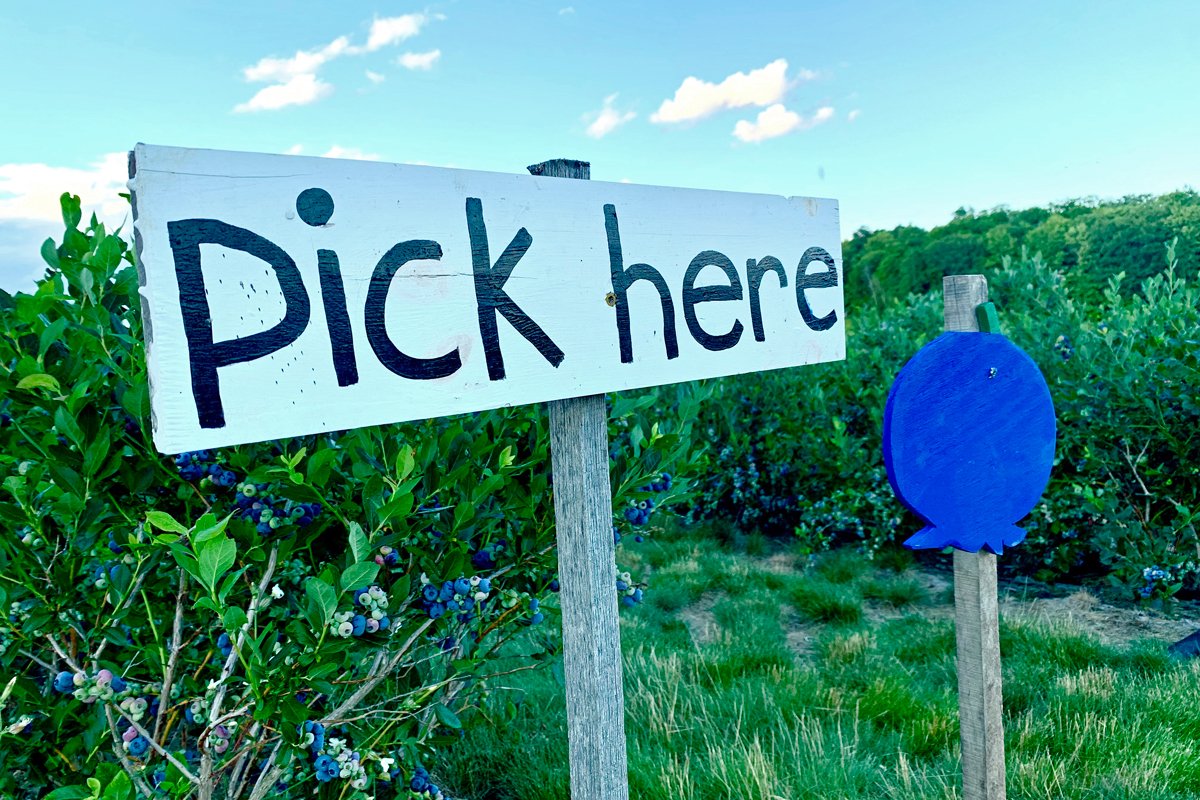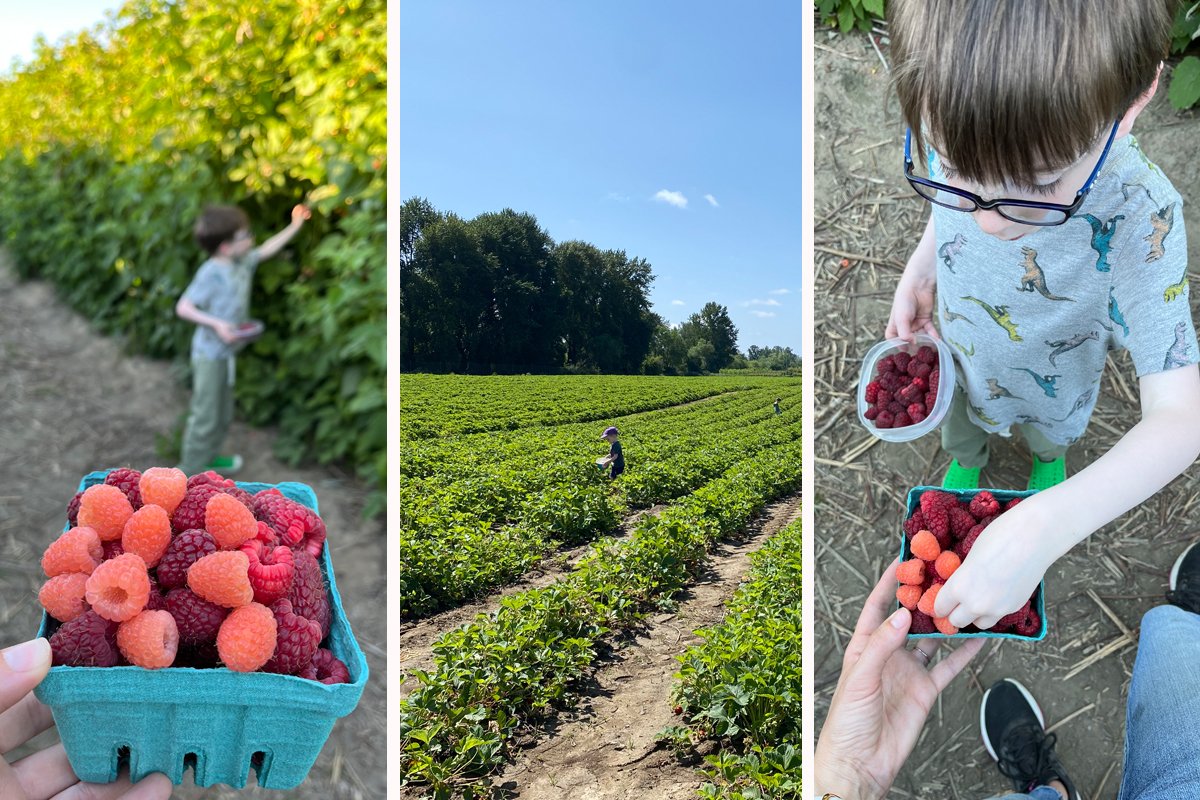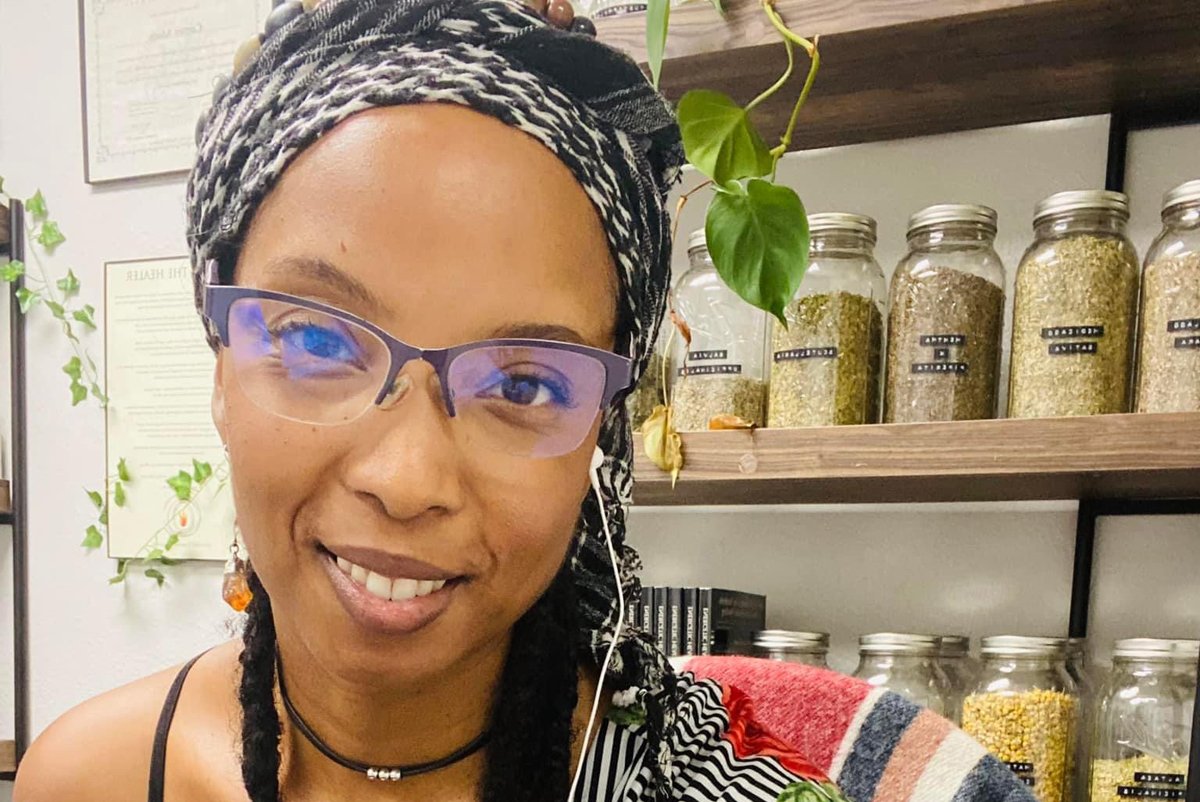Extreme heat, intense rains and droughts, and other climate impacts have put a dent in the number of people willing to visit farms this summer.

Extreme heat, intense rains and droughts, and other climate impacts have put a dent in the number of people willing to visit farms this summer.
September 6, 2023

U-pick serves several roles, including help with the harvest and marketing, said Jessica Sanford, co-owner of Adam’s Berry Farm in Vermont. (Photo courtesy of Adam’s Berry Farm)
If you tried to call Owl’s Head Blueberry Farm in Richmond, Vermont, this summer, you might have reached an automated voicemail announcing that the evening’s live music had been rescheduled for later in the week and the U-pick was closed due to thunderstorms. At Berry Patch Farm in Central Iowa, three consecutive years of drought plus water restrictions led to crop failure that left the U-pick operation struggling. And in Celeste, Texas, Paul Magedson, owner of Good Earth Organic Farm, hasn’t seen many visitors this summer either.
“It’s just too hot,” Magedson said in a recent phone call. In June, a heat dome covering the state pushed temperatures to 119 degrees in some places. “We had calls for strawberries, but we didn’t have any. I cancelled [on] a lot of people.”
“Unpredictable weather patterns are a problem, making it harder to plan, and operators are worried.”
Even when the crops survive, recent bad weather—unhealthy air quality from wildfires, storms, heatwaves, hurricanes, and more—has often kept customers from spending their days outside picking fruit or touring farms. This is difficult for many small farms which rely on events and other forms of agritourism for income and as a way to develop relationships with consumers.
“For many farms that offer outside entertainment, visitor numbers are down,” said Claudia Schmidt, assistant professor of marketing and local food systems at Penn State. “Unpredictable weather patterns are a problem, making it harder to plan, and operators are worried,” she added.
The last agricultural census, taken in 2017, showed that only 1.5 percent of farms received income from agritourism activities. The majority of those farms are small, however—63.3 percent of farms offering both agritourism and direct-to-consumer sales (such as through U-pick, farm stands, and farmers’ markets) were under 100 acres.
The term “agritourism” was first identified in the U.S. Census of Agriculture in 2007; while the trend long predates the term, it has been growing ever since. Schmidt said that many farms opened their operations up to visitors during the pandemic and she expects that the next Agricultural Census—which was taken in 2022 and will likely be released in 2024—will show an increase in farms participating.
Income on farms offering recreational activities like hayrides and farm tours grew by 67 percent between 2007 and 2017. Direct sales gave farmers an average of $21,570 in income in 2017 and an untold additional value in marketing and goodwill.
“U-pick serves several different roles,” said Jessica Sanford, co-owner of Adam’s Berry Farm in Vermont. “One, it helps with the harvest. Two, it really helps with marketing, outreach, and introducing people to who we are and what we do.” Adam’s Berry Farm doesn’t do much traditional marketing or use social media, and the owners rely on on-farm events to build goodwill with the public. “But we hope that people’s experience at the farm translates to them buying berries from us at the farmers’ market or vice versa,” added Sanford.

Wet, rainy weather and wildfire-related smoke forced Wickham’s Fruit Farm in Cutchogue, New York, to close its U-pick offering more often than not this year. (Photo courtesy of Laurie McBride)
The changing climate, and the weather extremes it brings, has made that difficult. “I think everyone would agree that the sporadic weather events have gotten worse or more severe,” Sanford said. In 2012, she and her husband, with whom she co-owns the farm, had to move locations because of continual flooding. The new location has more space for indoor activities that help keep visitors coming to their farm even when the weather makes visiting the actual farm fields less appealing.
“It’s not a matter of ‘Will we get a heat wave?’ but ‘When is it going to happen and how will it affect the fruit?’”
“We do events like kids’ yoga and music, story hour, some classes,” Sanford said. “Maybe people can’t pick berries, but they can enjoy the farm and purchase from the store.” They invested in a mechanical harvester a few years ago. “In years like this when it’s so rainy, we don’t have the manpower to get to all our berries,” Sanford said. The harvester makes it possible to get berries visitors don’t pick and freeze them or put them into value-added products.
This isn’t an entirely new story. “Weather has affected us forever,” said Megan Hallstone, operations manager at Columbia Farms U-Pick in Oregon. “You could always have a bad year,” she explained. But now heat waves have gone from a rarity in the Pacific Northwest to something she expects. Once unprecedented weather—the kind that fries crops overnight and makes it unsafe for visitors to be outside in the fields—is becoming the norm. “It’s not a matter of, ‘Will we get a heat wave?’ but ‘When is it going to happen and how will it affect the fruit?’” she said.
Hallstone has started closing U-pick operations at noon on days when the forecast highs creep close to or over 100 degrees. “I’ve had somebody pass out in a strawberry field before,” she said. Since the farm is in a rural area, she was on hold with 911 for 10 minutes before anyone even answered her call. “I don’t want my staff to be out here when it’s super hot; I don’t want customers to come out when it’s super hot,” Hallstone said. “It’s just not worth it.”

Columbia Farms U-Pick in Oregon closes to visitors when the temperatures reach 100 degrees. (Photo courtesy of Megan Hallstone)
For some farms, agritourism activities only bring in a small percentage of income; but in a business with such low margins, it can be an important lifeline. “Some of these farms wouldn’t be economically viable without it,” said Audrey Comerford, agritourism coordinator for the Oregon State University extension service. But, she added, the reason that agritourism exists in the first place is because farmers are inventive, and many have turned to diversification to stay afloat when one crop fails or bad weather during one harvest keeps visitors away.
Agritourism has become important enough that in 2022, a bill was introduced that would, if passed, establish an Office of Agritourism inside the USDA. Representative Jennifer Wexton (D-Virginia), the bill’s sponsor, said in a statement, “I’ve heard from too many small business owners in our region about how hard it is to get connected with the resources that they need to grow their agritourism businesses.”
The current farm bill will expire this month, and there’s hope that more support for agritourism could be included in the new version. Currently, some USDA programs like the Farmers’ Market Promotion Program can be used to fund new agritourism projects. There are even two USDA insurance programs for small farms that can provide coverage when a heatwave prevents customers from getting out to pick at a farm or a harvest is rained out.
But it’s not clear whether it will be enough to bolster farms like Southern Belle Farm in McDonough, Georgia, which lost its peach crop after warm winter weather led to as much as a 90 percent crop loss in the state.
“We knew going into the season that we were going to be down some,” said Jake Carter, Southern Belle’s president. The farm added flowers and a few other last-minute crops for people to enjoy. “I’m not going to sit here and tell you it’s like peaches,” he said. “It’s not what people wanted and it’s not what we wanted.” But at least it gave people a reason to visit the farm, which offers a farm market, bakery, and other attractions. Visitor numbers were down, Carter said, “but this year was a good example of why you diversify and why we’ll continue to do that.”

Poor air quality from Canadian wildfire smoke impacted U-pick operations at Wickham’s Fruit Farm in Cutchogue, New York. (Photo courtesy of Laurie McBride)
Wickham’s Fruit Farm in Cutchogue, New York, takes a similar approach. As a result, the farm grows about 25 different crops. Laurie McBride, farm stand manager and wholesale coordinator for the farm, said that roughly three-quarters of the business comes from direct-to-consumer sales. “If we have a down [year] in one of those crops, we’re generally able to cushion our losses with some other product.”
The wet, rainy weather forced the farm to “close U-pick more often than not” because the plants are more likely to get diseases when they’re wet, McBride said. And in early June, when smoke from the wildfires in Canada made it unhealthy for people to go outside, McBride estimates U-pick sales were down 10 percent to 15 percent. “Air quality had a huge impact on our strawberry season.”
As the global temperatures continue to creep toward . When that happens, McBride said the farm may shift more of its business from direct-to-consumer sales to wholesale and retail markets. Right now, Wickham’s is looking into growing different crops that can better accommodate cooler springs and they recently installed a high tunnel to help with tomato production. “We’re trying to be innovative for keeping ahead of climate change,” she added.
Many farmers hope they won’t have to move away from U-pick or on-farm sales, which can also include selling value-added products such as baked goods and jam. The chance to cut out the middleman in the sales equation means that many farmers will prioritize agritourism over other parts of their business, said Columbia Farm’s Hallstone.
“We are at the whims of the world market. Farmers are price-takers, not price-makers. The U-pick is the one place on the farm where we can set the price,” said Hallstone.
To keep that personal connection going, farmers and policy makers will be looking for ways to mitigate the effects of climate change—both on their crops and on visitors. Taking advantage of covered and indoor spaces is one solution. Diversifying and planting new crop varieties that can better withstand heat, drought, and rain is another.
In the Pacific Northwest, Hallstone said, “We’re always thinking about how we add more shade in a thoughtful way because berries can’t grow in shade. My husband has repeatedly been telling me I need to get misters.” Both options are on the table for the years ahead.

September 4, 2024
By paying top dollar for milk and sourcing within 15 miles of its creamery, Jasper Hill supports an entire community.
September 3, 2024

August 27, 2024

August 26, 2024

August 20, 2024

August 13, 2024

August 12, 2024

Like the story?
Join the conversation.